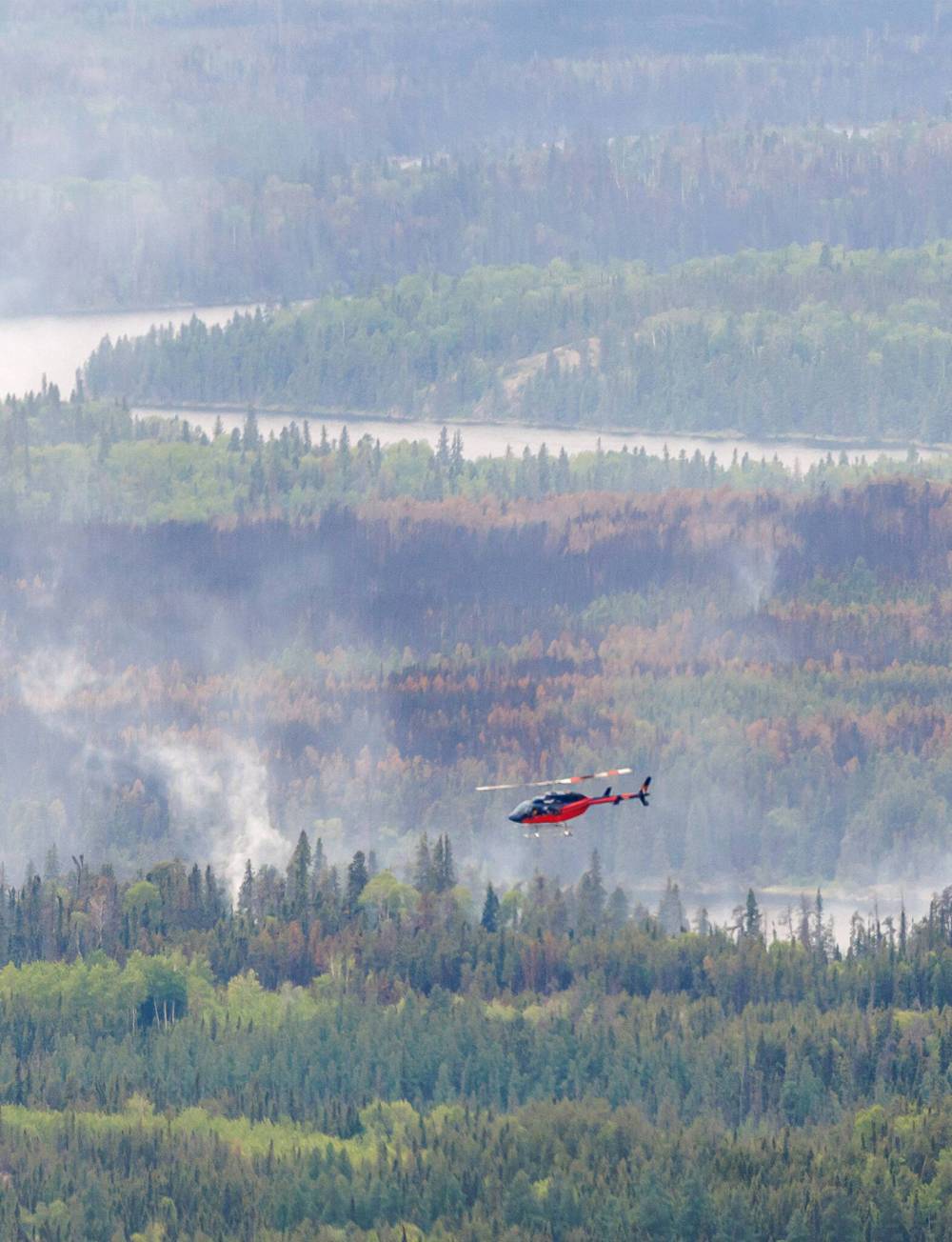Planning for the future’s wildfires
Advertisement
Read this article for free:
or
Already have an account? Log in here »
To continue reading, please subscribe:
Monthly Digital Subscription
$1 per week for 24 weeks*
- Enjoy unlimited reading on winnipegfreepress.com
- Read the E-Edition, our digital replica newspaper
- Access News Break, our award-winning app
- Play interactive puzzles
*Billed as $4.00 plus GST every four weeks. After 24 weeks, price increases to the regular rate of $19.00 plus GST every four weeks. Offer available to new and qualified returning subscribers only. Cancel any time.
Monthly Digital Subscription
$4.75/week*
- Enjoy unlimited reading on winnipegfreepress.com
- Read the E-Edition, our digital replica newspaper
- Access News Break, our award-winning app
- Play interactive puzzles
*Billed as $19 plus GST every four weeks. Cancel any time.
To continue reading, please subscribe:
Add Free Press access to your Brandon Sun subscription for only an additional
$1 for the first 4 weeks*
*Your next subscription payment will increase by $1.00 and you will be charged $16.99 plus GST for four weeks. After four weeks, your payment will increase to $23.99 plus GST every four weeks.
Read unlimited articles for free today:
or
Already have an account? Log in here »
It’s been a terrible year for wildfires in Manitoba, and a betting person would say future years are unlikely to be any better, unless we start planning how to change our fire response now.
“We just came out of the worst wildfire season in living memory,” Environment and Climate Change Minister Mike Moyes said as he spoke at a news conference last week announcing that the province would take a new approach to fighting wildland fires.
“We recognize that local communities often will have insights in how to respond or how to prevent things. As we review (the wildfire response), we’re going to be looking to make those connections with local leaders and communities so we can get it right, heaven forbid, if that ever happens again.”

MIKE DEAL / FREE PRESS
Wildfire conditions around Flin Flon on June 12.
The 2025 wildfire season began in early May in the midst of a heat wave. It’s seen 432 fires consume more than 2.1 million hectares of land in this province. Seventy of those fires are still not out.
It’s sobering. But not just because of the effects in Manitoba.
The picture outside of Manitoba is sobering, too — considering what’s changed in wildland fires over the past 10 years.
On Sept. 25, the federal government has issued the last National Wildland Fire Situation Report for this year’s fire season — at the end of the official season, almost 200 wildfire were still burning, 25 of them out of control — and one feature of the report in particular sticks out.
This year, there were 5,508 wildland fires recorded — not all that many more than the 10-year average of 5,347 fires. In total, 103 per cent of the 10-year average.
But consider the amount of territory that burned in Canada this summer: so far this year, 8,815,180 hectares burned, compared to the 10-year average of 4,077,876 hectares. In the dry world of statistics, that means the area burned this year’s fires, countrywide, was 216 per cent larger than the average year over the last decade.
Keep in mind also that the 10-year average is a moving target: there have been higher-than-average fire years in 2017, 2018, 202, 2023 and 2024 (with 2023 having the most fire damage since records have been kept), meaning the current 10-year average has moved up considerably from years past.
And that’s not going to change. The last decade has seen bigger, faster-developing wildland fires, primarily because of hotter, drier weather.
That means fires develop, grow and move faster — to have any hope of addressing that speed, we either need to have more firefighting resources, or better efforts to limit the spread of fires before they start. Better forest stewardship has a huge role to play — so does a more flexible rapid response to fires at their outset.
On top of Manitoba — and every other province — developing their own new approaches to new fire conditions, there also has to be a clear national strategy to fight or reduce forest fires, one that includes national, quickly mobile firefighting capability that can move a body of resources directly to provinces that need them most.
There is a national non-profit corporation, the Canadian Interagency Forest Fire Centre, that shares provincial and international fire resources, but it co-ordinates resources from jurisdictions that have to balance their own needs — and, potentially, future needs — before sharing equipment and personnel. You can only dispatch what’s available, and having a national resource that can take up the slack makes sense — especially when several provinces are using their resources to fight fires at the same time.
Wildfires don’t recognize or respect provincial or national borders.
We have to change the way we think about fighting them. Now.

